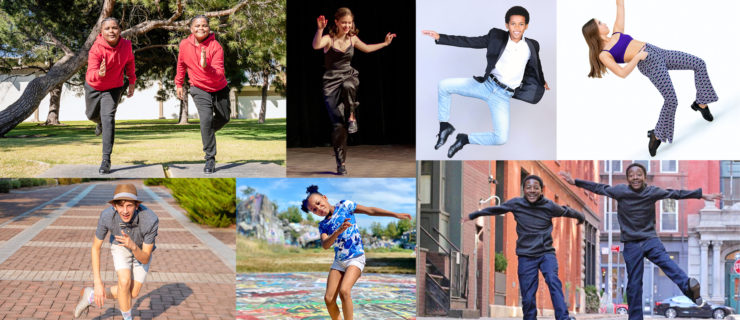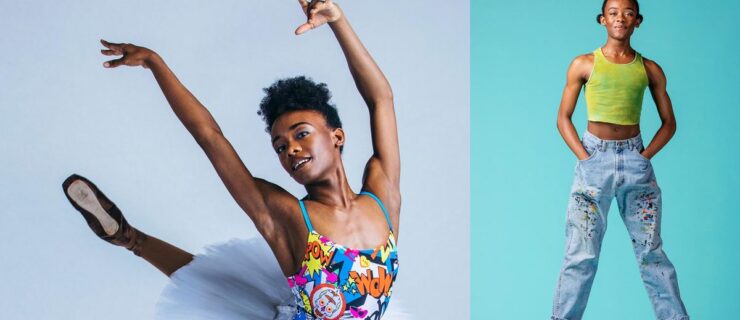How Charlize Glass Morphed From Baby to Beast On the Dance Floor
Some might say Charlize Glass’ fame kicked off with a single three-letter word. In 2014, Beyoncé shared a video of the then–12-year-old dancer performing to “Yoncé” on Instagram, along with a simple caption: “WOW!”
But by that point, the hip-hop mini had already performed at the MTV Video Music Awards and on “The Ellen DeGeneres Show,” and won first runner-up with her crew, 8 Flavahz, on “America’s Best Dance Crew.” And her Queen Bey Insta shout-out wasn’t even the pinnacle of her tween career: She earned a spot on The PULSE On Tour as an Elite Protégé for the 2014–2015 season, and performed with Missy Elliott at the Super Bowl XLIX Halftime Show in 2015.
These days, the 16-year-old spends her time touring the country as Brian Friedman’s assistant at Radix Dance Convention and blowing up YouTube and Instagram with her class-video cameos. And while the Char Char we fell in love with was a hip-hop cutie pie, the more mature artist we see today is sure to rock the dance world for years to come.
Becoming a Beast
Perhaps the biggest challenge that comes with early success is finding a way to keep growing. For Charlize, that’s meant getting to know as many different artists and styles as possible. While she follows a handful of choreographers faithfully—Brian Friedman, Kyle Hanagami, and Tessandra Chavez, to name a few—the L.A. native takes class all over La La Land, and always keeps her eye out for up-and-coming choreographers on social media. “Anytime I see a new name come up on the schedule at Movement Lifestyle, The Playground, or Millennium Dance Complex, I’m like, ‘I have to go!’ ” she says. The choreographers who have been working with her from the start see the difference. “She has grown so much over the past six years that I’ve known her,” Hanagami says. “The amount of texture she has in her movement is far beyond her years.”
 Photo by Toreno
Photo by Toreno
“When Charlize was younger, she would be so nervous around me that she’d sometimes mess herself up,” says Friedman. (He hired Charlize the first time he saw her, when she was just 8 years old.) “She had a breakthrough a couple of years ago, at the end of her season with The PULSE On Tour. At one of the last cities, I had to put her in with the older kids, because I didn’t have enough dancers. She out-danced everyone on that stage, and I knew that she had overcome her phobia. From that point forward, she was untouchable.”
The Radix Effect
Charlize owes much of her recent growth to her job assisting Friedman on tour with Radix Dance Convention. The gig includes everything from dancing alongside Friedman in classes to putting on a headset during performances to manage things backstage. “Radix has helped me mature as a dancer and a person,” she says. “The first time I put on that headset, I was so nervous, but now I’m not.”
 Photo by Toreno
Photo by Toreno
Increased exposure to ballet and contemporary classes at Radix has also helped Charlize polish her technique and become a more well-rounded dancer. She’s found that contemporary classes have actually taken her hip hop to another level. “I hear different aspects of the music, and it’s made me smoother in between the hits,” she says. “It’s helped me develop my own signature groove, flowing from one beat to the next.”
Young Fame
Getting discovered as a preteen certainly has its perks—like being on texting terms with many of the industry’s top artists. “I’m lucky, because now I tend to get texts about job opportunities from choreographers,” Charlize says. “Every audition is basically a direct book.”
 Photo by Toreno
Photo by Toreno
Early fame does have its drawbacks, of course. Since Charlize can hold her own among much older dancers, choreographers sometimes forget that she’s a high-schooler, with high school responsibilities. “Adults don’t have homework!” she says, laughing. But Charlize admits that recognition from industry insiders helps her feel confident about the future. “I know I have a definite path for my career,” she says. And she’s careful not to let her success go to her head—because that’s not her. “A lot of dancers will do well in this industry,” she says, “but when they let it change their personality, people don’t want to work with them anymore.”
A version of this story appeared in the January 2018 issue of
Dance Spirit with the title “A Char Char-med Life.”




